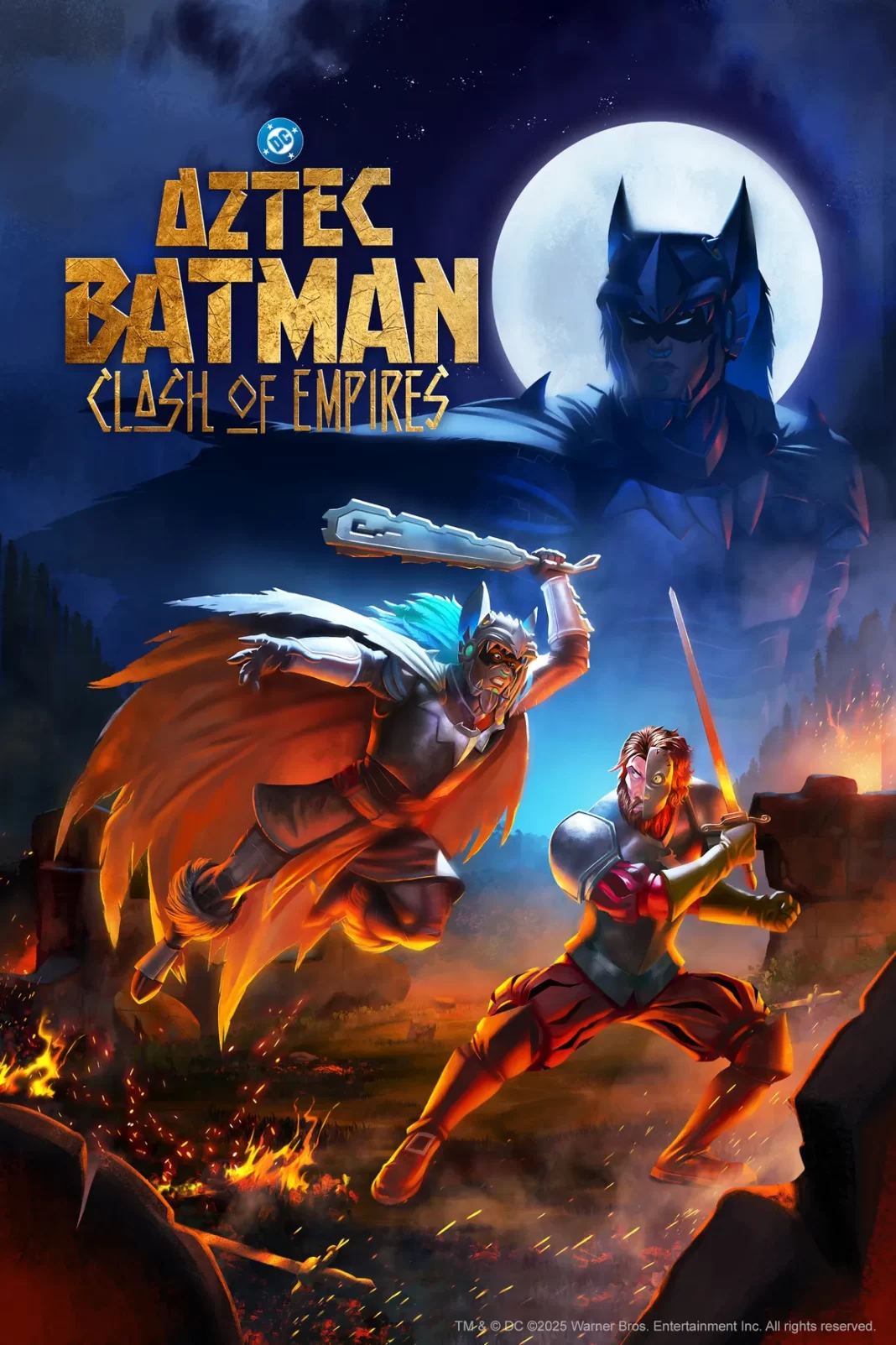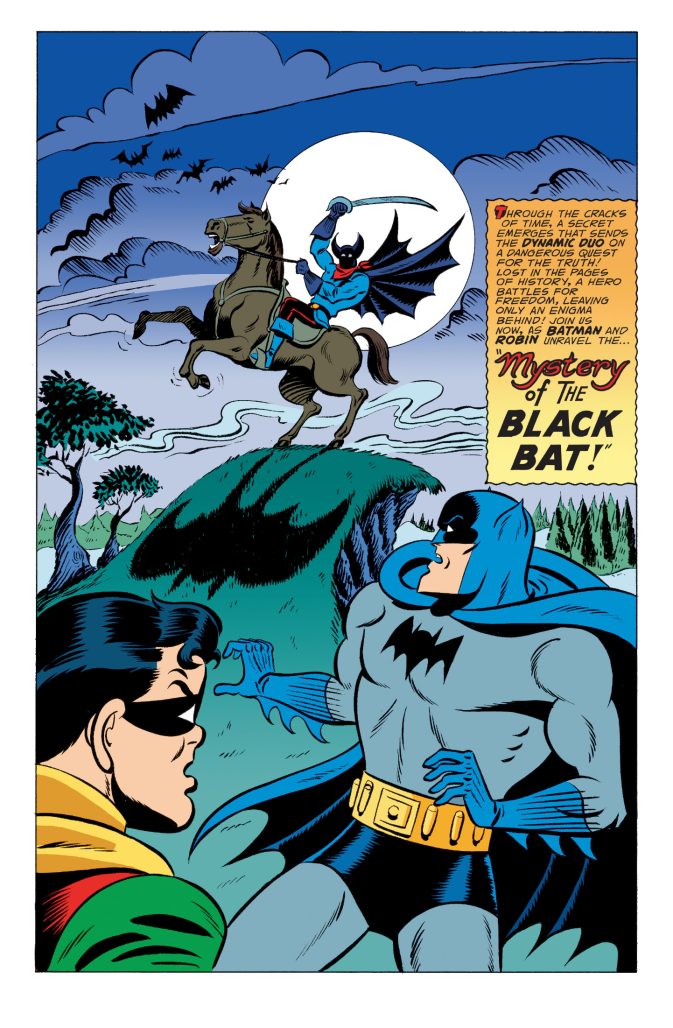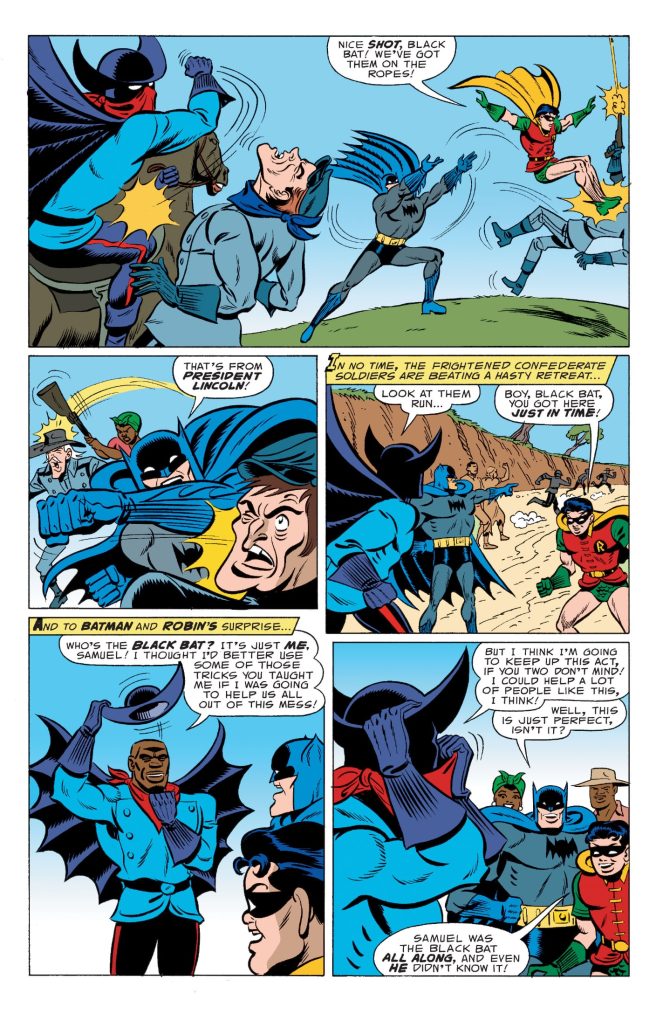During New York Comic Con, Warner Bros. Animation held “The Art Knight: Batman in Animation,” a panel that featured top artists and creatives discussing past and current Batman animated projects. The Beat had to opportunity to sit down with the panelists including James Tucker (Executive Producer & Showrunner, Batman: Caped Crusader), Juan Meza-Leon (Director, Aztec Batman: Clash of Empires), Mike Roth (Executive Producer & Showrunner, Bat-Fam), and Simon J. Smith (Executive Producer, Batwheels)
Read our full interview coverage below and stay tuned for additional press coverage with Roth and the the voice cast of the Bat-Fam animated series.
The interview has been edited for length and clarity.

Juan Meza-Leon: I always go to the spirit of vengeance. Also, he’s a human character who has to persevere through overwhelming obstacles to become something bigger than he is. The story of Batman Azteca takes place in a historical setting where the circumstances are dire and the obstacles are overwhelming. This is somebody who saw his father get killed in front of him and his village get completely destroyed by invaders. There’s a bat deity called Tzinacan that was our window to create this whole myth about a warrior who dons the mantle of this bat god in order to fight at night against these invading forces. We tried to capture that spirit of Batman about a young boy who transforms himself into something bigger who can bring justice to the people.
Taimur Dar: I love how malleable Batman is, but I think people often incorrectly describe Batman stories, like the Christopher Nolan or Matt Reeves films, as serious when they mean realistic.
Juan Meza-Leon: In the comic books you can see the same thing like Frank Miller, Denny O’Neil, or Grant Morrison. One of my favorite books is Arkham Asylum. And then you have the campy side of it as well. I think Batman allows itself to be reinterpreted in all these different forms. When I hear someone say, “It’s too this or too that.” that’s somebody who just knows the movies and doesn’t know the comics. They’re both equally great. Frank Miller is very different from Grant Morrison or Neal Adams. It’s all the same essence; a human being struggling with his own psychology and weaknesses and trying to overcome them.

Juan Meza-Leon: The whole world of Batman Azteca was conceived originally as a miniseries but got concise to just one story. If you know the history of the fall of the [Aztec] Empire, it wasn’t just the wars. They brought the plague and disease. So Doctor Valdo is going to bring that side of the story when you see he has all these vials in the movie. The evil is just starting. We hope we can continue the story. We’re never going to call him Penguin. He’s Doctor Valdo. He’s a mix between science and religion of the time. He’s a very dangerous character. He’s going to contribute to a lot of the fall of the culture. Also, Yoka has a huge part in the following story. We hope we get the greenlit to continue the story. We have a treatment.

Simon J. Smith: I came late to the party. I loved the ’66 series when I was a kid and obviously loved the Batman movies. But when The Dark Knight Returns came out that blew my mind in terms of the tone and artwork. From that point on, I’ve always kept Batman close as possible. So when Warner Bros. ask me to work on a Batman project, “You had me at bat!”
Taimur Dar: I loved the “Banebuggy” episode of Batwheels. I saw someone from the show comment on the challenge of adapting these iconic Batman villains into something that’s kid friendly. Has it indeed been difficult?
Simon J. Smith: It’s very difficult. Sometimes they are maniacal lunatics who have a checkered past justifying in their minds what they’re doing. We can’t do any of that. We try to bring in the villains or heroes into our world which is very much a playground scenario. Whereas in other properties they’re killing people, in our world we’ve transformed Gotham into a theme park and the villains are humiliating people. That’s the most they ever do. [For Banebuggy] all he wants to do is be bigger because he’s actually really small. He wants to become what a real Bane character would be in a Batman universe but that’s his drive. He doesn’t want to crush people.
Taimur Dar: How did the Adam West Batmobile come about?
Simon J. Smith: That came from Sam Reigster, the president of animation, who really liked the idea. Also we really wanted to try to get the original ‘66 Batmobile in the show. Me and co-showrunner Michael G. Sterns loved the idea of getting that character in there. Sam said, “You could use the dialogue from the last two movies that Adam [West] did.” Michael did a brilliant job with his writers weaving an episode where we could incorporate the audio. We called the character A.D.A.M. so that’s how that came about. In Season 3 he makes a surprise appearance in another episode with some other batmobiles. There’s some fun stuff coming up in Season 3.
Taimur Dar: On that subject, anything else you can tease in terms of villains?
Simon J. Smith: We have the Clock King making an appearance in Season 3. We have a mini arc of some racing episodes with Professor Zoom. There’s a whole arc of ten episodes racing against Professor Zoom, the Reverse-Flash.
Taimur Dar: Don’t suppose you can reveal any guest voices?
Simon J. Smith: Dan Stevens plays Professor Zoom. He loved the character and did an amazing job. We still have Ethan Hawke as Batman. Season 3 is going to be our best season yet.

Mike Roth: It all germinates from Merry Little Batman. We wanted to tell a perennial Christmas story and wanted that “co-viewership.” In order to do that, the idea was to take Batman and make him more domesticated. He trades his tuxedos and is in full dad mode. He’s got a beard and he’s got his flannels. He’s taken all that Batman energy that he has and applied it to being a father. From there, as we were building up the movie, we got really excited about what it would look like if we brought in other characters and where else it could go. There’s just so many more stories to tell and places to go.
Taimur Dar: I was really impressed with the world-building in Bat-Fam. There’s a lot of past history hinted that’s yet to be revealed such as Damian’s mom, Talia al Ghul. Do you already have all the characters’ past history established in your head or are you making it up as you go along?
Mike Roth: For some characters, yes, we make it up as we go along. We don’t make it up to the point where we break a character like Clayface and do something completely random. But he’s still Clayface at the end of the day. As he got introduced, we figured out how he snuggly fit in this puzzle. For someone like Talia, I have plans. I have an idea of who she was to the property before we’ve saw anything. Full disclosure, there’s moments where we tiptoe through some storylines to make sure if we ever get to a place that she can come back, we have a space carved out for her that makes sense.

Mike Roth: I think we’ve always envisioned a Catwoman. [Laughs]. Bruce naming his cat Selina is definitely an Easter egg.
Taimur Dar: What did creating new characters for the series entail?
Mike Roth: DC and Warner Bros. gave us a large sandbox to play in. There was space to bring in some new characters. Bruce is very pragmatic and methodical. We wanted that voice to come into the mix. Some of who Alicia is informs that. Of course, we wanted her to feel connected to the family so it made sense to have her related to someone in the family, like Alfred. We also liked this idea of being a childhood of Bruce. It all comes back to what the property and stories need and where we want to go with it.

James Tucker: A long time ago!
Taimur Dar: I’d love to hear about your experience on that comic project.
James Tucker: It was interesting because it was for Batman #600. I think they originally contacted Darwyn Cooke and he recommended me. We worked on Batman Beyond together back in the day. I think Ed called me directly and said, “They want to do a parody of a 1950s Batman story.” I was a fan of those and ended up basing Batman: The Brave and the Bold show on that type of story. Those ‘50s stories were so politically incorrect and wrong. It was the times. I said, “Let’s do another politically incorrect one.” That’s where we ended up with the story. It was fun getting to draw in that old school style which later I ended up doing for Brave and the Bold and I had done for a New Adventures of Batman episode called “Legends of the Dark Knight.” We did a segment in that 1950s Dick Sprang style. I had storyboarded that part. That’s what I used for the story Ed and I did. Not many people know about that story! [Laughs]. It’s a goofy story but fun to do.

James Tucker: The thing the Silver Age got right was it’s very fanciful and inventive. The ideas were so big and broad. They were goofy but sci-fi based like space aliens and weird inventions. It got away from the 1940s which was more noir based. Even Superman was more of a noir based character originally because he was just fighting corruption and street level gangsters. Sci-fi was increasingly brought in. With Batman, the ‘50s was when they really started pushing him into more sci-fi stuff. As the Silver Age, the core of most of the characters we still love was established in the ‘50s. All the fanciful things that make up Superman came through the ‘50s like the bottled city of Kandor or Krypto.
Of course, people try to reimagine them as grittier and more serious. But at their core, they were big fanciful ideas and kind of silly. But they don’t have to be silly. If you do it with a straight face like James Gunn is doing, he’s embracing the bigness of them at the end of the day he’s treating them with some respect too. Superman having robots everyone else would think is too silly. But it’s not silly if it’s in Star Wars. Why is it silly in a Superman show? Anything in Star Wars can be in a Superman show. Star Wars is full of big, over-the-top ideas. I never thought there was an issue with sci-fi or the ‘50s interpretations. It’s just how you do it.

James Tucker: I will say that if the only version you know is Mark Hamil or Jack Nicholson or even Heath Ledger, then this may seem like a different take to you. But if you know the Joker’s history going back to his first appearance, you’ll recognize him. We’re going back to his roots just like we went back to Batman’s roots. For me, it’s like the Joker I first saw in reprints. I was weaned on Cesar Romero so it was a very different version of the Joker than I was used to. It’s a scary Joker. I think we’ve had scary Jokers before, but they’ve been a mixture of Nicholson and Romero and Ledger. He’s evolved over the years away from what he originally appeared as. So we went back to basics.
Stay tuned to The Beat for more coverage from NYCC ’25.

 3 hours ago
1
3 hours ago
1


 English (US)
English (US)